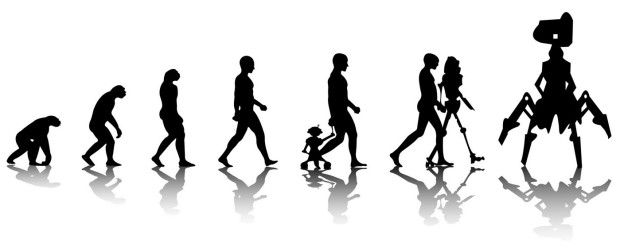Nowadays, autonomous vehicles are all the rage. We even hear that perhaps in a few years cars will make human drivers obsolete. Instead, roads and highways will be filled with vehicles that drive themselves and carry humans as passengers only. We are also informed that such vehicles will increase safety, at least for accidents triggered by human error (or over the limit alcohol consumption!). And the same will also happen with airplanes, space exploration, manufacturing, retail, war, you name it.
 Autonomy seen in this context results from the advances of both automation and robotics. Automation is not new as it has been taking place since the 1st Industrial Revolution. Back then, mechanical automation was king and queen and, in no small extent, facilitated large-scale manufacturing first, followed by the modernization of agriculture in the developed world. What is new is robotics which as re-emerged from the real of science fiction and becomes much more tangible today. Robotics is also propelled by the rapid advances in digital technologies and the generation of massive amounts of digital data on many human activities. Together, they make artificial intelligence, well, more intelligent.
Autonomy seen in this context results from the advances of both automation and robotics. Automation is not new as it has been taking place since the 1st Industrial Revolution. Back then, mechanical automation was king and queen and, in no small extent, facilitated large-scale manufacturing first, followed by the modernization of agriculture in the developed world. What is new is robotics which as re-emerged from the real of science fiction and becomes much more tangible today. Robotics is also propelled by the rapid advances in digital technologies and the generation of massive amounts of digital data on many human activities. Together, they make artificial intelligence, well, more intelligent.
The new book by MIT Professor David A. Mindell explores the concept of autonomy in this context but sees the whole picture from a human perspective.
Mindell’s first step is to challenge the current and popular myths that have emerged about automation and robotics. These are 1. The myth that progress is linear which is not new and have been expounded before (linked to the idea of “inevitable” progress, not addressed in this book); 2. The myth that machines and robots always replace people when it comes to job automation. Introducing the latter does more that mechanize a human job: it makes it more complex “often increasing the workload (or shifting it around)” (pg. 9); and 3. The myth of full autonomy which states that robots can operate on their own: “For any apparently autonomous system, we can always find the wrapper of human control that makes it useful and returns meaningful data” (pg. 10), Mindell counters.
Our author suggests that for robots and vehicles we should instead focus on the concepts of human, remote and autonomous. The first should replace the idea of (wo)manned (or not) devices. Humans have a more significant role than just manning devices. The concept of remote refers to the location of the operator vis-a-vis the robot. But it is not the physical location but rather its cognitive character. Finally, while “Even in engineering, autonomy means different things, […] a working definition of autonomy is: human-designed means of transforming data sensed from the environment into purposeful plans and actions” (pgs. 11-12). What is crucial for the analysis is to focus on how people use these systems in real life, and not so much on whether how such systems operate or whether they make humans redundant.
In this context, the book focuses on four key questions: 1. Where are the people using these systems location-wise?; 2. Which people are they in terms of capacities?; 3. What are these people doing in terms of tasks?; and 4. When are they doing it in terms of time?
The book attempts to answer the four critical questions by looking at real-life examples. Dedicated chapters to deep-sea exploration, aeronautics, war and space exploration follow, detailing concrete applications of automation and robotics to such areas. Mindell has done excellent research and undertaken interviews on all of them. The author is actually a pioneer on deep-sea exploration (and is an amateur pilot!). In all the areas examined by the book, we see the critical role humans play vis-à-vis autonomous system, roles that has changed over time. Being a pilot or an oceanographer today is not the same as it was say 25 years ago. But they still play a crucial role when performing the tasks related to their jobs interacting with autonomous systems and devices.
Mindell used this evidence to argue that there is no such thing as a fully autonomous robot as the latter are always the result of human design and intervention. This changes the way we should address the issue. For sure, this shift raises the issue of who is in control when autonomous systems are designed. Should this be left to engineers only? We should also factor the social aspects of technology use by humans. Take driving. It is also a social activity, not just a technical task. Surely, it demands a basic level of skills but also benefits from the direct interaction between drivers.
What we see today is not “the linear progression from human to remote to autonomous” (pg. 218) vehicles, but rather the convergence of human, remote and autonomous which are evolving together thus erasing boundaries. The issue is thus not human vs. robots. Rather, the issue is how do we interact with “autonomous” systems and devices in more effective and safe ways.
Raúl
Mindell, David A. 2015. Our Robots, Ourselves: Robotics and the Myths of Autonomy. New York: Viking. ISBN: 978-0-525-42697-4.

